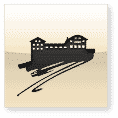Dôle: The Valais classic.
There are wines and grape varieties that make wine lovers and connoisseurs rave purely from the name. If the term “Bordeaux” falls, the freaks of these great and sometimes very expensive red wines are unstoppable. For those who are more mainstream, the powerful, opulent Primitivo from Puglia is one of the most hotly loved drinks, no matter how much residual sugar is in the wine. In Valais, on the other hand, crus made from indigenous varieties such as Petite Arvine, Heida, Amigne, Cornalin, Humagne rouge and the like are currently very much in vogue.
Quite rightly, because from these grapes are pressed characterful, distinctive growths. Other wines have a harder time attracting attention. For example, the Dôle, although inextricably linked to the Valais. However, the drop was or continues to be often equated with mass instead of class. He has probably also been hurt by the fact that the rules have been changed more or less regularly in the past. Since 1993 it is fixed: The Dôle must consist of 85 percent of a blend of Pinot noir and Gamay. In addition, within the framework of the remaining 15 percent, additional varieties are permitted which the producers cultivate in Switzerland’s largest growing region, such as Merlot, Syrah, Gamaret, Diolinoir or Ancellotta. This composition is not only met with approval: lovers of the classic Dôle from Pinot noir and Gamay criticize that the identity would be lost as a result. Proponents, on the other hand, are convinced that the new rule has led to an improvement in qualities.
There is no doubt about it: Dôle is a classic from the Valais and it is impossible to imagine the shelves of retailers or the wine lists of restaurants without it. It has a long history, because the name – it comes from a town of the same name in the French Jura – was first mentioned for Gamay as early as the mid-19th century. Later, a wine made from Pinot noir is called Dôle, before referring to a blend of both grapes. At the end of the fifties, the production of red wine increased dramatically in Valais. This could have led to a decline in the quality of the Dôle. They wanted to put a stop to that. For this reason, this designation could only be used for grapes that had a sugar content of at least 83 Oechsle degrees. If this must weight is not reached, the Dôle can be declassified and sold as “Goron”.
Today, fortunately, many producers give the dôle the necessary attention and consistently focus on quality. Rightly so, because the wine trumps with qualities and characteristics that fit well in our time. It is usually fruity, light, neither excessively high in alcohol nor characterized by a disturbing wood aroma, elegant, uncomplicated, convivial. Depending on the terroir and the winemaker’s way of doing things, quite different expressions emerge. There is probably no more ideal wine to be enjoyed on the terrace or in the garden, perfectly accompanying a dried meat or cheese platter. This inevitably creates a good mood.
The Albert Mathier & Sons wine family also has a Dôle de Salquenen in its range. Salgesch 2019, to which a small proportion of Gamaret is added, shines with distinctive characteristics typical of the assemblage. In the glass sparkles an intense ruby red. The pure-toned, fruity-spicy bouquet is immediately appealing. On the palate, again, the beautiful fruit, the well-integrated acidity, the soft tannins and the harmonious finish stand out. Medium-bodied and accessible, Dôle is aged in steel tanks and should certainly hold at this level for four or five years. The grapes come from a vineyard 560 meters above sea level. The calcareous and gravelly soils are an excellent base for Pinot noir.
This example is proof that, despite strong competition from modern, perhaps fashionable varieties, the Dôle certainly has its place in the diverse Valais wine universe. Nothing against new trends, no bad word against innovations, but the longer, the more it is worthwhile not to lose sight of the traditional, the tried and tested in a good sense in increasingly fast-moving and uncertain times. The future certainly belongs to these values. Regional instead of global – the Dôle more than lives up to this highly topical motto.



